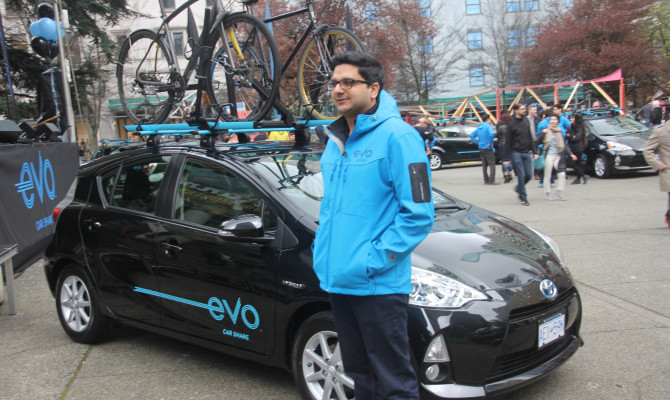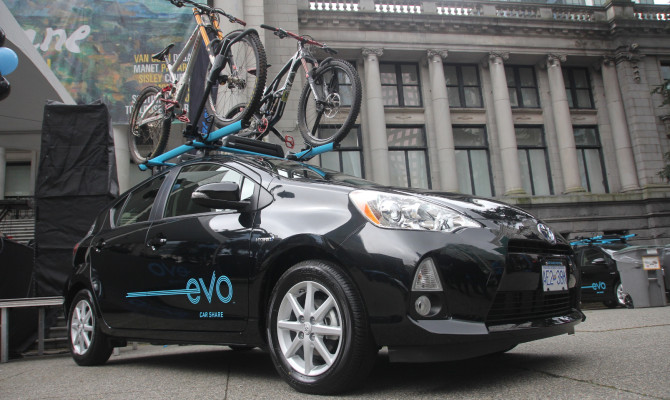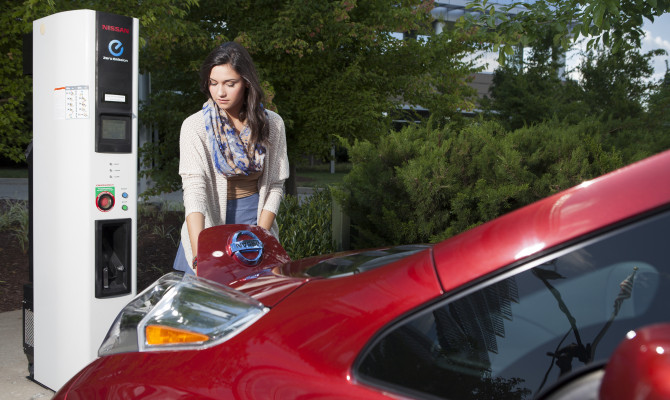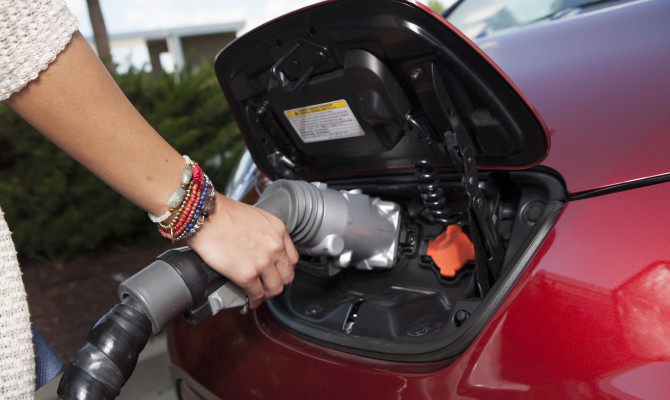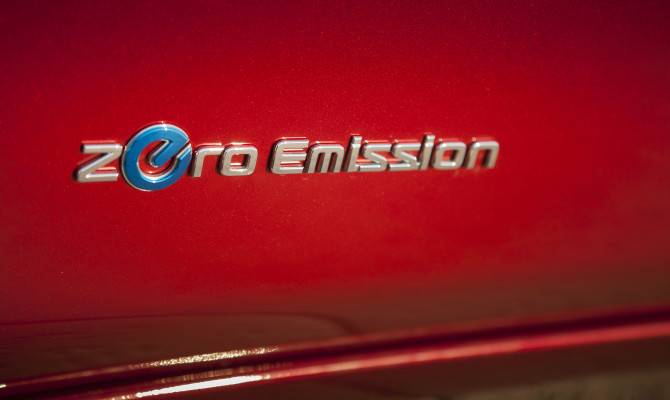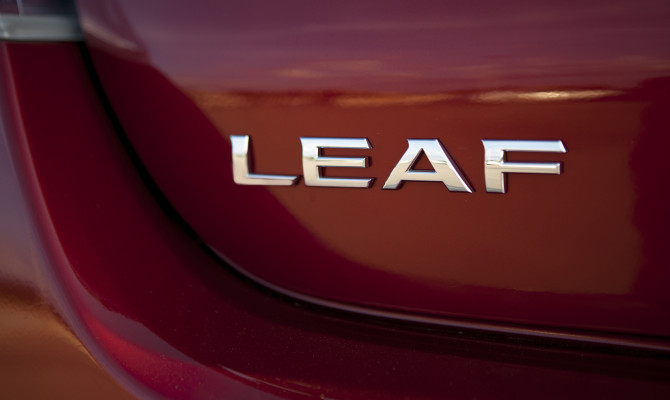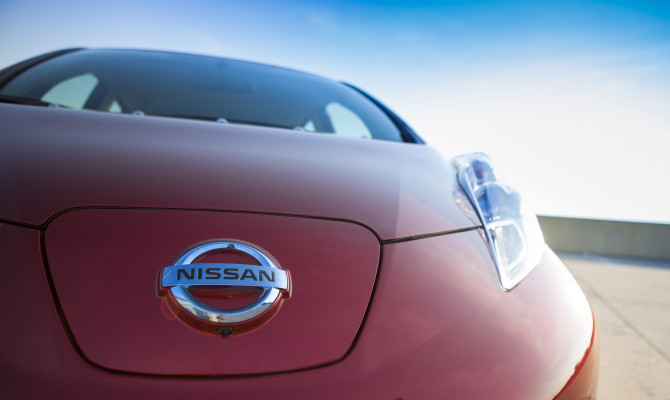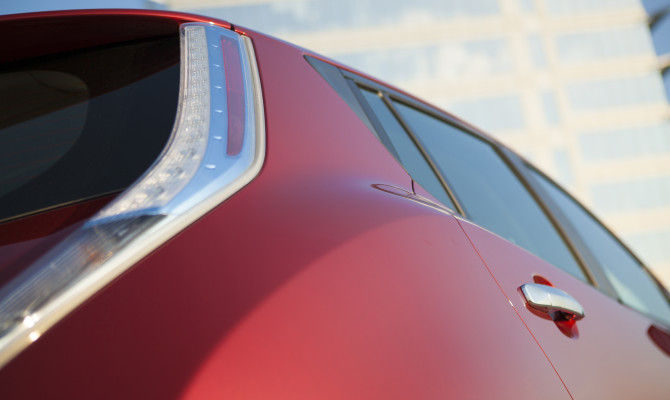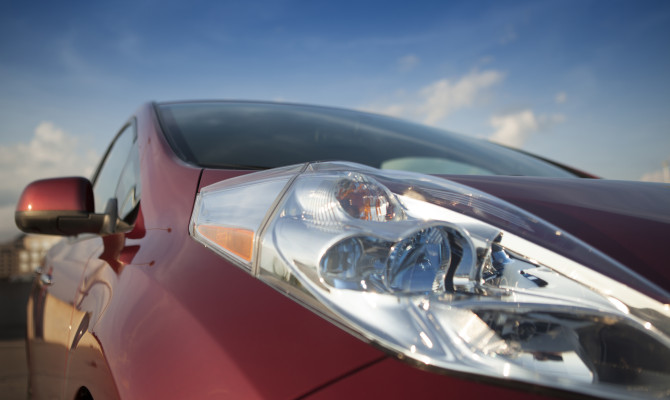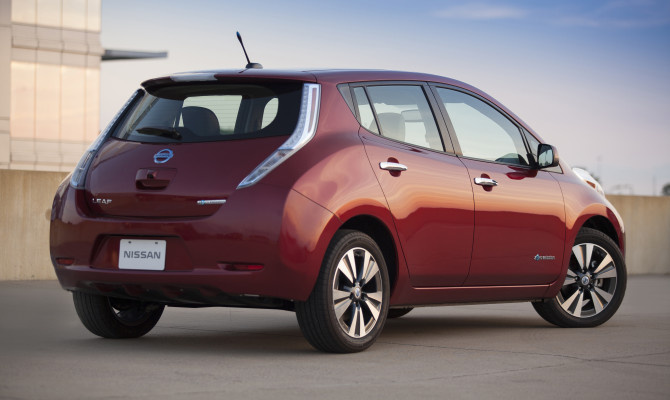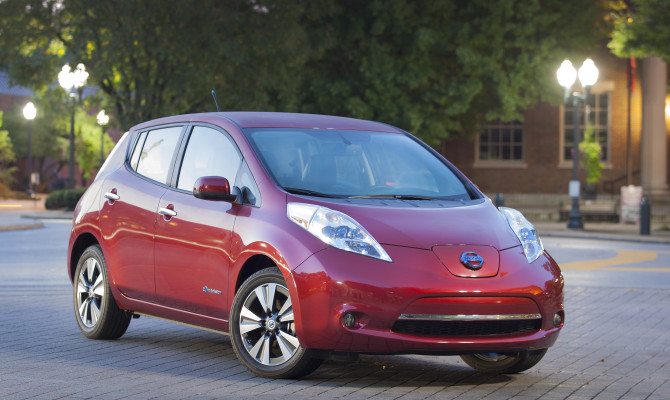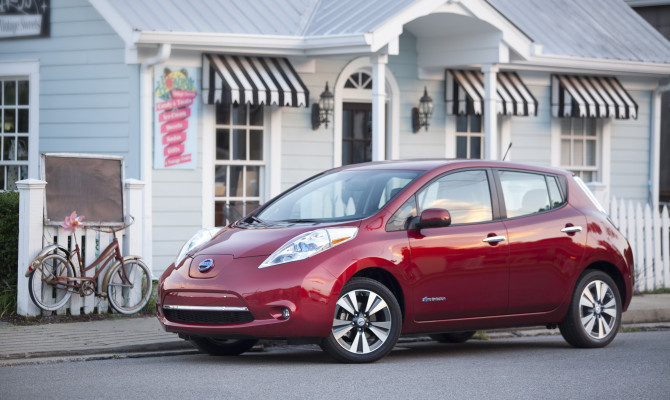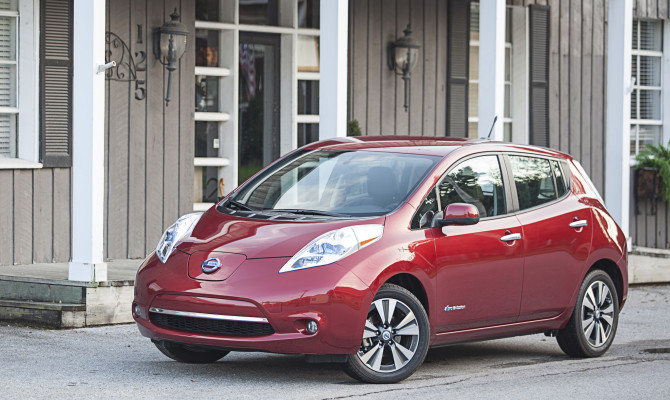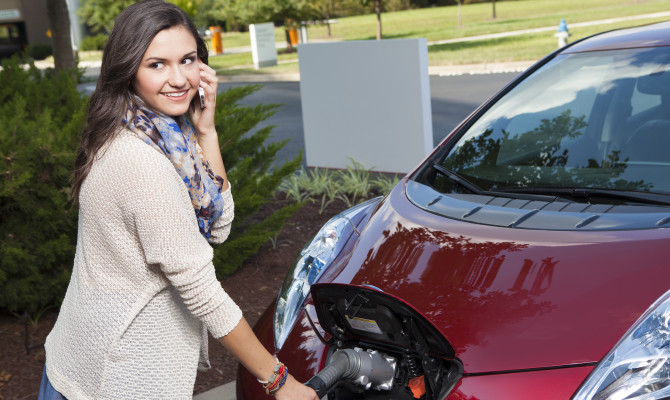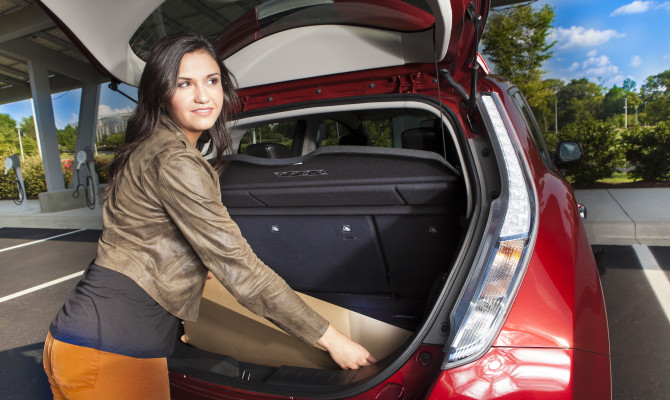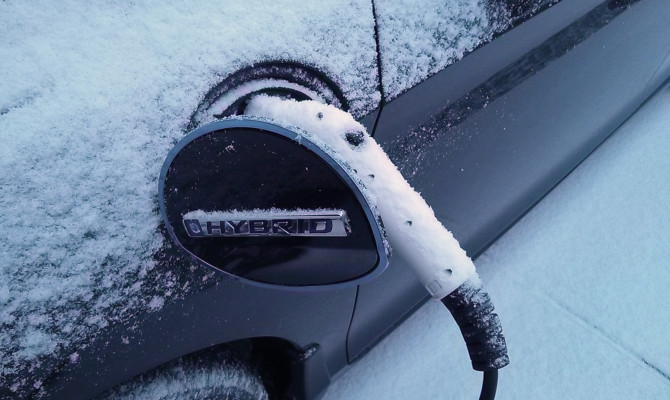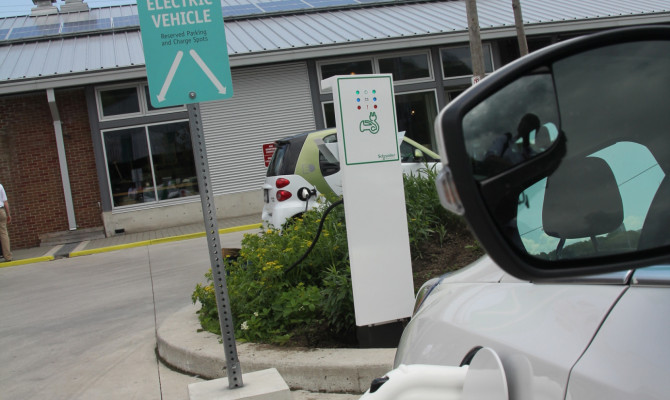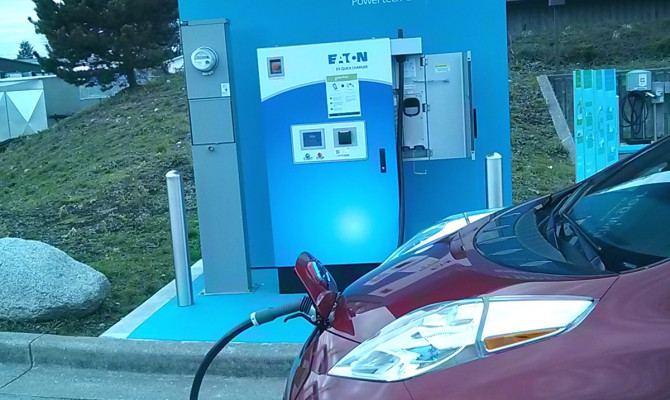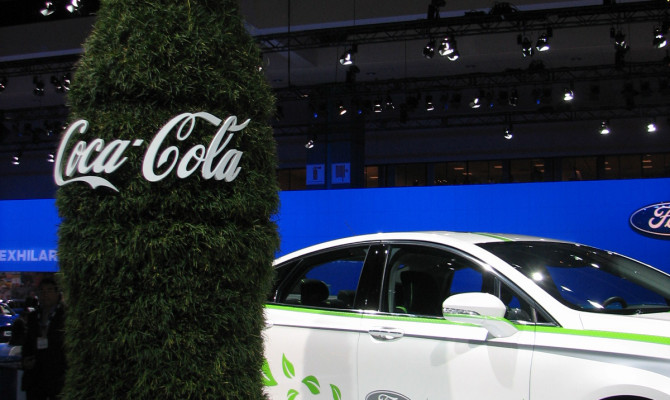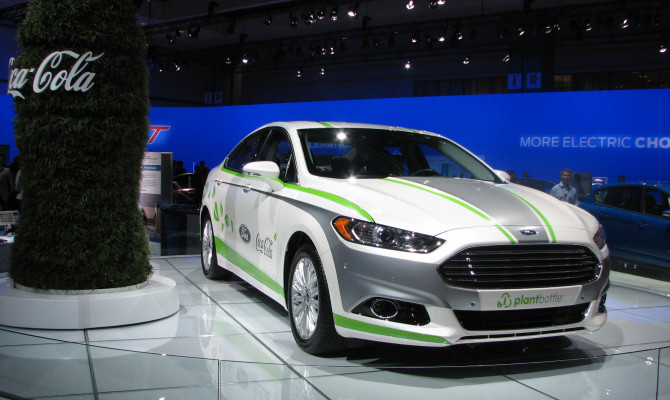The BC Automobile Association (BCAA) recently launched a new car share service with an interesting up-tempo public promotional bash outside the Art Gallery in downtown Vancouver. A 250-strong fleet of Toyota Prius C hybrid vehicles will be available to users of this new service, called Evo, and some of them were on display.
“What we are creating here is the evolution of BCAA – the auto club where you don’t even need to own a car,” said Shan Parmar, Director of Evo Car Share.
BCAA believes car sharing is of growing importance for modern city dwellers and is a sustainable mobility option. It’s also a way to improve the on-going issue of traffic congestion. A single car share vehicle can remove up to 12 private vehicles off the road, according to a recent Metro Vancouver study report.
Over the past 20 years, the car sharing service business has grown rapidly and it’s now available in over 600 cities around the world. Major auto makers, like Mercedes-Benz and BMW, are also involved in providing this type of service. In Vancouver, Evo joins Zip, Modo and Car2go for a share of the car share pie.
“We believe Vancouverites are looking for a more flexible car share option that allows them to get outdoors and enjoy everything that BC has to offer,” explained Parmar. “Evo is the only one-way car share service that has vehicles with four doors, room for five passengers, bike racks, ski racks and space for cargo. It’s the only car share service designed to fit a BC lifestyle.”
BCAA is the first auto club to provide a car share service, according to Parmar. Initially the Evo service territory, where vehicles can be picked up and must be returned, is a 50 sq km area within Vancouver city. An Evo vehicle can be driven anywhere and then returned anywhere within the Evo service territory.
“We have designated (free) Evo parking spaces throughout the city,” added Parmar. “In addition to that we have permits from the city of Vancouver that allow an Evo vehicle to park in any permit-only or resident-only zones, within the city.”
Parking fees, gasoline, auto insurance and vehicle maintenance are all included with an Evo vehicle. A user of the service only pays for the time that they are logged into the vehicle and it starts on a per-minute fee base of 41 cents. The hourly usage fee rate is $14.99 and it’s $89.99 per day. BCAA members do receive some perks by enrolling in Evo. The ($35.00) registration fee is waived and they also receive a ten per cent usage credit.
The highly fuel-efficient Toyota Prius C is a four-door hatchback that offers seating for five passengers and the Evo vehicles all come equipped with bike/ski racks. An Evo client can locate available Evo vehicles with a downloadable mobile smartphone app or by using the Evo web site.
An Evo client can also unlock the vehicle with the Evo app, or their Evo membership card, when they arrive at the Evo (Prius C) vehicle. The Prius C has a keyless ignition system and the key fob is in the vehicle. If they want to park the vehicle, but not end a session, they lock the vehicle with the key fob and keep it with them. The Evo user meter will, however, continue to run until you return the key fob to the vehicle and log off the session.
“We’re seeing usage from a wide variety of users,” said Parmar. “Young people who don’t own a car. Couples or people with young families, who may own a car, yet sometimes need a second car. People who use the service simply for the convenience, they don’t want the hassle of finding or paying for downtown parking.”
To learn more about how BCAA’s Evo car share service works, visit evo.ca.
“With the expansion this year’s show underwent, the Vancouver show is moving into the big leagues.”
(more…)
If you would like to plug in an all-electric Nissan LEAF at your home, this weekend is the last chance you will have to get one for nothing!
British Columbia’s SCRAP-IT Program kindly supplied us with one of the eco-friendly sedans as a prize in our Plug-In to Win Contest, which closes at midnight on Sunday (see the link or below for entry details). The winner will be announced online next week and Driveway will feature an interview with the lucky winner in an upcoming edition.
SCRAP-IT announced its new incentive program here last week, which offers a $3,000 rebate for electric car purchasers if they scrap a 2000 or older vehicle. This is in addition to the newly announced provincial government program detailed in our main story today.
The LEAF will be on display at the SCRAP-IT booth throughout this weekend at the Vancouver International Auto Show, in the Vancouver Convention Centre West. Qualifying electric vehicles for the organization’s incentive are listed on the SCRAP-IT.ca website. Take a look because some of them, plus vehicles qualifying under the additional government program, will be at the show to view and some made available there for test drives outside.
For information on electric vehicles and charging systems and infrastructure visit Plug-In BC at: http://pluginbc.ca/
For details of the Clean Energy Vehicle incentive program visit: www.cevforbc.ca
“The incentives are expected to reduce greenhouse gas emissions by the equivalent of taking 1,400 cars off the road…”
(more…)
“The 2015 Acura RLX Sport Hybrid SH-AWD would be my personal “primo-green” pick, if I were lucky enough to have a spare $50K stashed away…”
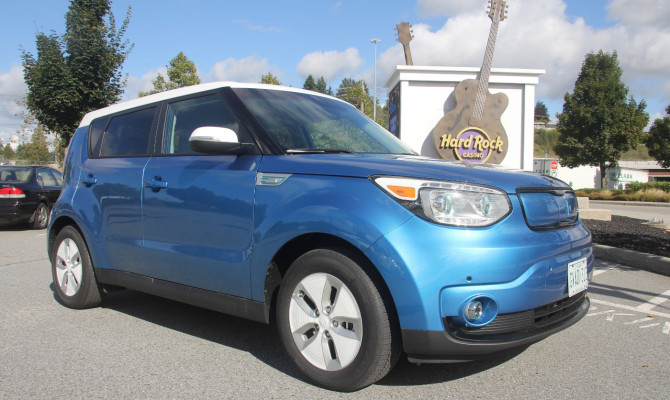
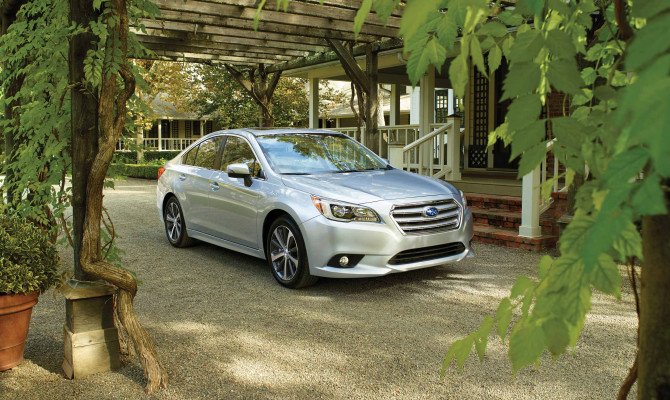
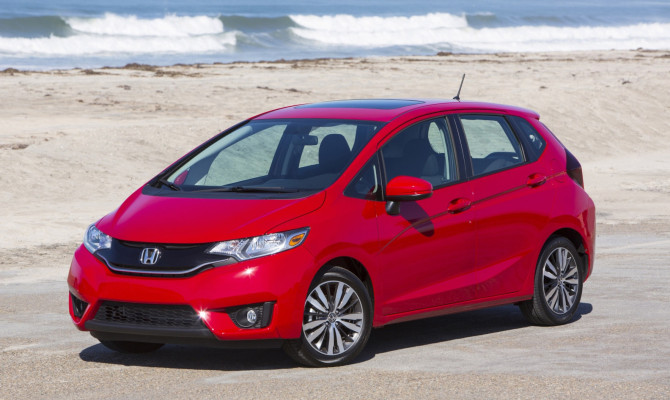
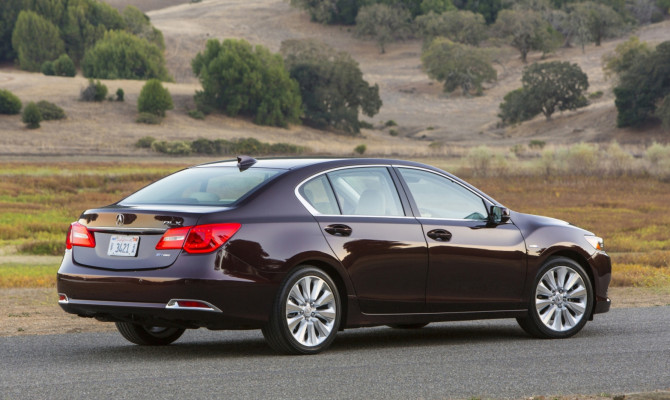
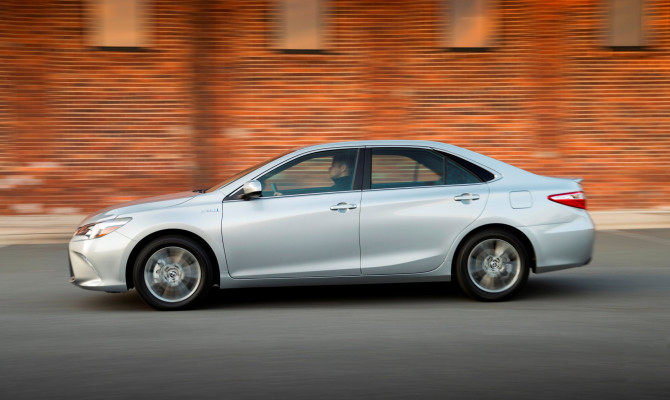
Good news for B.C. auto buyers who want a “green car” – a $7.5 million fund was set aside in Victoria’s provincial budget, in order to bring back a government incentive program that offered point of sale rebates to buyers of plug-in hybrids, electric vehicles and fuel cell vehicles.
The previous rebate plan expired last spring and details of the new plan are expected to be announced at the Vancouver auto show.
Here are five new-to-market vehicle choices with “green” aspirations. The first four are finalists for the AJAC Green Car of the Year Award, which will also be announced in Vancouver at the auto show next week.
The 2015 Acura RLX Sport Hybrid SH-AWD would be my personal “primo-green” pick, if I were lucky enough to have a spare $50K stashed away.
2015 Honda Fit
Honda Fit may be small on the outside, but its organic shape and an ingeniously versatile seating system makes the most of every bit of interior space. The new Fit also consumes even less fuel, due to a new powertrain and a lighter yet more rigid new body.
A 1.5-litre engine that can produce 130 horsepower and 114 lb-ft of torque, powers all Fit models. Fuel economy is rated at 7.0/5.7/6.4 L/100km (city/highway/combined) with the new Continuously Variable Transmission (CVT).
Members of the Automobile Journalists Association of Canada (AJAC) have already voted Best New (2015) Small Car (under $21,000) the Honda Fit.
2015 Kia Soul EV
This is a clever electric vehicle adaptation of Kia’s tall 5-door compact car with the funky styling. Soul EV offers the same, user-friendly features as its gasoline counterpart, with seating for four or five and a large rear cargo area. Kia’s polymer (electrolyte) lithium-ion battery pack is compact and easier to hide, as is can be molded into different shapes. In Soul EV it’s centrally fitted under the rear seats and a raised rear floor pan.
The liquid-cooled AC synchronous permanent magnet electric motor can generate a whopping 210 lb-ft of torque. That’s 59 lb-ft more than the gas engine version of Soul. Yet, its impressively smooth and standing starts are not as jumpy as other electric vehicles. Soul EV has a claimed driving range of 149 km on a single charge.
2015 Subaru Legacy
The redesigned Subaru Legacy won the overall 2015 Canadian Car of the Year Award. A substantial improvement in fuel economy was achieved through a variety of engineering initiatives that included an impressive new (Lineartronic CVT) automatic transmission. It’s also the only car in the “family car” market segment that comes with standard all-wheel-drive.
Legacy was engineered in Japan and is built in the USA in an award winning production facility, for environmental excellence, in Indiana. In fact, the entire 832-acre plant site is designated a Backyard Wildlife Habitat by the National Wildlife Federation.
2015 Toyota Camry Hybrid
Toyota has rebuilt the 2015 Toyota Camry from the ground up. It’s a sportier, better handling Camry with a striking new design and a passenger cabin that Toyota claim is the quietest-ever. The Hybrid editions come in three model grades and a starting price of just $28,710.
Camry Hybrid is powered by a 2.5-litre four-cylinder Atkinson Cycle engine linked with Hybrid Synergy drive and matched to an E-CVT. Fuel economy is rated at an amazing 5.7 L/100km (which is about 50 mpg) in the city and 6.0 L/100km on the highway.
2015 Acura RLX Sport Hybrid SH-AWD
Acura has linked its superb electronic (torque vectoring) Super Handling All-Wheel Drive (SH-AWD) system with a new hybrid powertrain in this all-new version of the RLX. The gas engine is a 3.5-litre V6 with Variable Cylinder Management and it’s linked to a seven-speed dual-clutch transmission.
This is the most powerful Acura production sedan ever built and has a claimed combined (gas + electric) peak output of 377 horsepower. Yet, its fuel consumption is a miserly 8.0/ 7.5 L/100km (city/highway). A little pricey (starts at $49,990), but amazing!
The Nissan LEAF miraculously cut a journey in half this week.
I’ll explain. I took the plug-in sedan on a 43-kilometre trip from Vancouver to Driveway HQ, on 152nd Street, in Surrey. When I set out, the screen display showed that I could drive emission-free for 146 kilometres.
Now, I could have taken off like an F1 racecar and street raced all the way, because electric power offers instant tire squealing torque if you press the pedal to the metal. But that’s not me. Spurred by my ecofriendly driving the previous day, the clever car had decided earlier in the day that I could do 156 kilometres on a full charge. Not boasting but that’s easily more than 20 kilometres better than the average driver can expect to achieve. Okay, maybe my head is swelling.
The big 1-4-6 winked at me. I threw the stick into ECO mode and with two flicks of the wrist pushed it into the enhanced B-mode, which puts the braking power regeneration into overdrive, so to speak.
I glided silently down the road, picking up pace ever so gradually in the busy city traffic. Rolling down the hills to Marpole, I could feel the juice from the brakes topping up that battery.
On the freeway, I hit the posted speed limit and 40 minutes later pulled into HQ. The display flashed 126. I had covered 43 klicks with the power required to move the car just 20! Such fun.
Next week: more on the joy of driving electric.
The reason to have these incentives is to help prime the pump, allow people to look at a new option and help the environment.” – Blair Qualey, President, New Car Dealers Association of BC.
While awareness about clean energy vehicles is growing, incentives to buy are still needed, according to the industry.
“It’s a marathon not a sprint,” said Blair Qualey, President and CEO of the New Car Dealers Association of BC. “We’ve made some good progress in creating awareness of clean energy vehicles and we’re trying to work with government to keep the (CEV incentive) program going. Last year around the same time we were in the same situation, not knowing what’s going to happen.”
The BC Government originally committed $14.3 million to the Clean Energy Vehicle (CEV) Program, back in 2011, to support a market transformation to the use of clean energy in the light duty transportation sector. It tied in with its goal to reduce B.C. greenhouse gas emissions by 33 per cent by 2020, and by 80 per cent by 2050 (compared to 2007 emissions). About 36 per cent of B.C.’s greenhouse gas emissions are estimated to come from the transportation sector.
As long as current funds last and until the program concludes at the end of March, a point-of-sale rebate (up to $5,000) is still available with the purchase of an electric vehicle (EV) and there are rebates (up to $500) available for residential “home” charge stations. Funding for public charge stations concluded at the end of March last year. In addition to plug-in electric vehicles, hydrogen fuel cell vehicles and natural gas vehicles are also included in this incentive program.
B.C. has certainly embraced the switch to clean energy and probably leads the country in adapting to the EV Level 2 (240 volt) public charge stations in place are now in the hundreds, home charge stations are starting to cost less to buy and install as the market expands and more (high-voltage) fast-charge stations will be joining the three already in operation.
That said, the EV is still a fragile market sector that’s struggling to establish a foothold.
When the CEV program started, according to Qualey, the inventory of EVs available for sale at local auto dealerships was very limited. A few years later the supply situation is much better, competition has certainly increased and prices are even starting to drop with increased production volume.
Yet, there’s still a significant price gap between an EV and a comparable gas engine vehicle.
The large spike in the number of buyers who claimed the EV incentive in this past year is a reflection of those changes in the market. The Chevrolet Volt, followed by the Nissan Leaf were (by far) the two most popular vehicle recipients. Interestingly, third most popular EV was the Tesla Model S, since Tesla doesn’t currently even have a walk-in-the-door dealership in B.C.
Most working people commute within the driving range (100 km to 150 km) of a fully charged EV, which makes them viable and the cleanest commuter vehicle choice. A plug-in hybrid electric vehicle (PHEV) can also currently qualify for a $2,500 instant rebate and are another excellent clean vehicle choice. A PHEV typically has an electric-only driving range of about 20 km to 30 km and then switches to hybrid extended range operation.
Quebec recently renewed its clean-vehicle incentive program, which offers up to $8,500 off the price of an EV, for another three years. Ontario also continues to provide a similar program with an up to $8,000 incentive. Some auto manufacturers may have second thoughts about the B.C. market, if incentives are no longer available, as the support costs involved in offering an EV in a product line are high.
“We’re at the point now where we have all the components necessary to do what everybody had envisioned back in 2010,” added Blair Qualey. “The reason to have these incentives is to help prime the pump, allow people to look at a new option and help the environment. All the pieces of the puzzle are there and it would be a shame not to put it together, when we have a chance to succeed.”
Here are some useful Electric Vehicle information web sites:
All of these sensor-based technologies make driving safer today and they could also be considered as building blocks for a more comprehensive automated driving system…
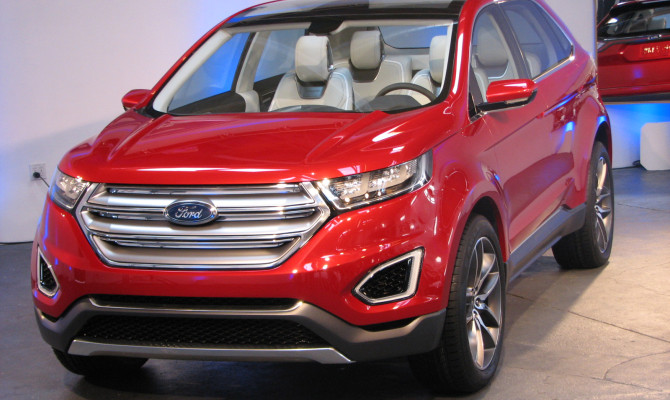
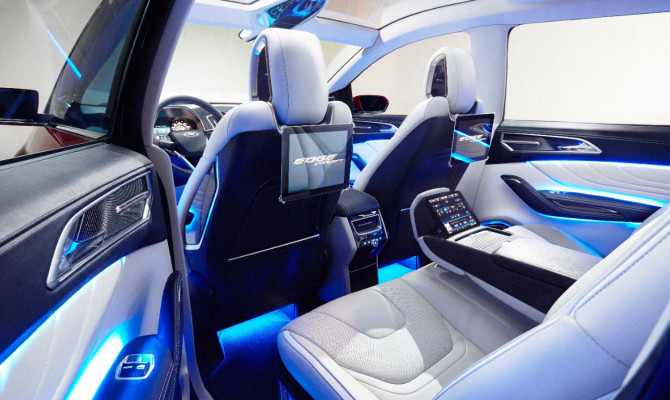
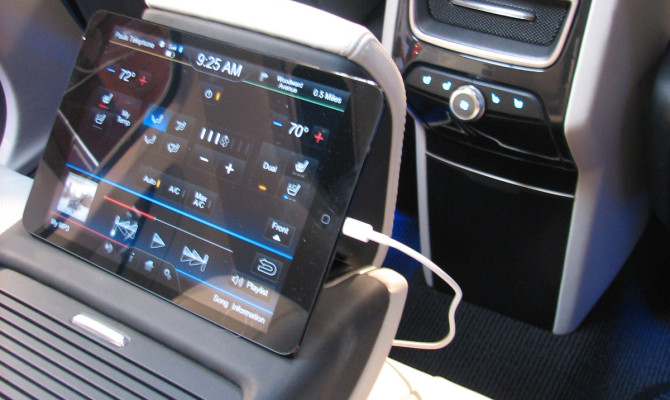
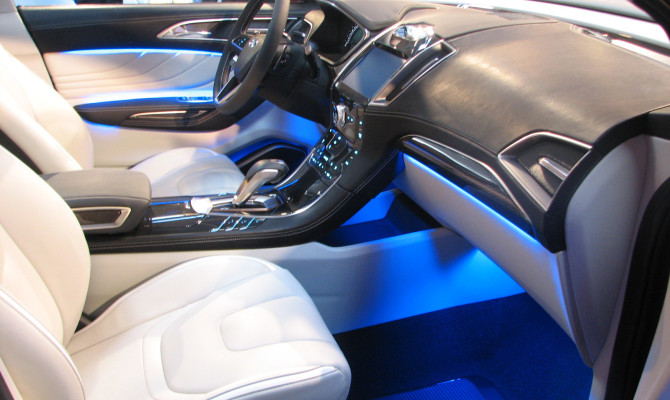
While most driving enthusiasts do not recognize the advent of a self-driving car as a good thing, drivers who have to endure crowded urban parking lots and the drudgery of stop-n-go highway commutes, on a daily basis, probably have a very different view.
The fully autonomous car may never become a reality for non-technical reasons. We are, however, seeing layer upon layer of new technologies that certainly move things along in that general direction and could make it technically feasible, and perhaps production feasible on a restricted basis.
The new Ford Edge Concept revealed at the Los Angeles Auto Show included two interesting automated driving technology advances that are currently under development by Ford… self-parking and obstacle avoidance systems.
What’s different about this advanced self-park technology is that it allows an owner to do it from outside the vehicle with a push-button remote. The vehicle can be automatically positioned in or be removed from a tight parking stall situation. That certainly beats crawling in or out of the rear hatch, when there’s not enough room to get in from a side door. This new system builds on Ford’s current active park assist feature, which is restricted to parallel parking situations and uses ultrasonic sensors.
Using similar sensor and automated vehicle control technology, Ford engineers are also working on an advanced obstacle avoidance system. The concept vehicle detects slow-moving or stationary obstacles in the same lane ahead and warn the driver. If the driver fails to steer or brake, the system automatically brake and steer the Edge around the object.
“Democratized technology” is an expression used frequently by Ford engineers. It’s about making leading-edge technologies, which traditionally took a long time to trickle-down from expensive luxury vehicles, available on popular, affordable vehicles much sooner, or even ahead of luxury class competition.
Ford’s current Active Park Assist system is already available on 12 models. This system automatically guides the vehicle into a parallel parking spot, while the driver controls the gas and brake pedals.
A “Lane-Keeping” system is available on 11 Ford models today. This uses a forward-facing camera to scan the road surface for lane markings. The system evaluates if the vehicle is drifting out of its lane and alerts the driver by vibrating the steering wheel. If the driver does not respond, the system provides steering torque to nudge the vehicle back toward the centre of the lane.
Adaptive cruise control and collision warning with brake support is available on 10 Ford models. The system uses radar to detect moving vehicles immediately ahead and modifies cruising speed if necessary.
Blind Spot Information System Available on 13 Ford models. Radar sensors in the rear corners monitor the spaces next to and just behind the vehicle. On the road, these sensors trigger a warning light in the mirror when there is another vehicle in the driver’s blind spot.
All of these sensor-based technologies make driving safer today and they could also be considered as building blocks for a more comprehensive automated driving system.
Email: bob [dot] mchugh [at] drivewaybc [dot] ca
**********
Things go greener with Coke… bottles
Ford and Coca-Cola have embarked upon an eco-marriage.
They’re both extensive users of plastic and both are committed to recycling and finding eco-alternatives. The first offspring of this somewhat unusual realtionship is the Ford Fusion Energi with a PlantBottle Technology interior.
PlantBottle Technology is the first-ever recyclable PET plastic bottle made partially from plants, instead of petroleum-derived materials. Already, more than 18 billion of these bottles have been distributed in 28 countries and Coca-Cola claims that this is equivalent to 400,000 barrels of oil saved. Using recycled PlantBottle bottles, Ford has produced the first-ever fiber that can be woven into durable, automotive-grade PET fabric.
Fusion Energi is the plug-in hybrid version of Ford’s global midsize car and it’s Ford’s most fuel-efficient sedan. Sound-absorbing recycled denim material, equivalent to more than two average-sized pairs of blue jeans, are also used in the car’s carpet liner and Ford already uses soy foam, made with soybeans, in every vehicle it builds in North America.
Green Car Journal has identified its five finalists for the magazine’s high-profile 2014 Green Car of the Year program.
The five 2014 models include the Audi A6 TDI, BMW 328d, Honda Accord, Mazda3, and Toyota Corolla. These five finalists are also honoured as Green Car Journal’s “Top 5 Green Cars for 2014” and earn the magazine’s “Green Car Product of Excellence” honours.
An increasing number of vehicle models are considered for the program each year, a reflection of the auto industry’s expanding efforts in offering new vehicles with higher efficiency and improved environmental impact. Green Car Journal has been honouring the most important “green” vehicles every year at the LA Auto Show, since its inaugural award announced at the show in 2005.
“The diversity of this field of finalists illustrates not only that ‘green’ has gone mainstream, but also that there is no single approach to achieving ever higher levels of fuel efficiency and environmental performance,” says Ron Cogan, editor and publisher of Green Car Journal and CarsOfChange.com. “There’s something for everyone in this year’s field of finalists, including clean diesel, high efficiency gasoline, and hybrid/plug-in hybrid power featured in mainstream, sporty, and executive models.”
Finalists are selected for their achievements in raising the bar in environmental performance. Availability to the mass market is a factor to ensure honoured models have the potential to make a real difference in environmental impact, and finalists must be available for sale by January 1st of the award year.
Green Car of the Year jurors include auto enthusiast and Tonight Show host Jay Leno, plus leaders of the nation’s major environmental organizations.
The Driveway team will be at the LA Show to bring the winners of this program and all the highlights of the glitzy auto extravaganza in tinseltown.
Recent Comments
- { Enjoyed your Forest of Bowland in the BMW X5M, particularly the photo of the BMW in front of the main part of Stonyhurst College where... }
- { Bantam designed the Jeep, not Willy's or Ford. The American military gave the original Bantam prototype to Willys and Ford to copy. There is plenty... }
- { All Escalades come with a 6.2-lilter V8 engine that produces 420 horsepower. A six-speed automatic is the only transmission offered and drives the rear wheels.... }
- { Alexandra is an excellent journalist. }
Popular Posts
- Journey to a ‘Sparkling’ Luxury Okanagan Resort “Four lucky readers will put a Dodge Journey’s weekend-...
- The Need For Speed: Hike Those Highway Limits More than half of those polled believe the province sho...
- Drives-U-Crazy… Erratic drivers. An early morning drive from Kelowna to Vancouver is nor...
- Readers Respond: The Pros and Cons of Increasing B.C. Speed Limits Increasing the speed limits will only increase risk to...
- Honda CR-V Review: The Compact Crossover To Get Things Done The CRV is a very stylish and aerodynamic crossover veh...


